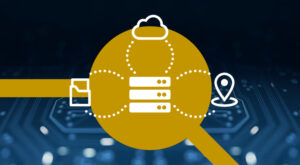

Dr Benedikt Wenzel
Member of the Executive Board, Head of Railway Data
- Many years of experience in collecting, processing and validating infrastructure data
- Trade-spanning expertise in the fields of ETCS, RAMS/CENELEC and digitisation
- High level of expertise in project handling at the national and international level
Dr Benedikt Wenzel is a member of the Executive Board and Head of Railway Data and system/RAMS engineering department at NEXTRAIL GmbH in accordance with EN 5012x. He has over ten years of experience in the fields of European Train Control System (ETCS) and safety. He is also a specialist in data management, including recording, processing and validation. Prior to joining NEXTRAIL as a senior consultant, he worked as a team and project manager for successful ETCS projects for leading railway operators at one of Germany’s largest engineering companies. His current projects focus on the intelligent digitisation of planning and testing processes as well as the distribution of data to track and on-board systems.
For his dissertation, ‘Development of a new validation approach for ETCS message data’, Dr Benedikt Wenzel received a doctorate in engineering from TU Dresden in 2013. Already in his diploma thesis entitled ‘Conception and Development of an ETCS database on the example of Saudi Railways Organization (SRO)’, he dealt deeply with the topic of the advancing the digitisation of railways.
As a research assistant and doctoral student, he was also responsible for collaborative research projects at TU Dresden, where he lectured in the field of ETCS and (semi-)formal methods in system development. He has also played an active role in the development of software for the validation of ETCS planning data using measurement data, among other things.
Personal project references for Dr Benedikt Wenzel
Safe Rail Map, DB Netz AG. Process for generating and delivering reliable map data.
DKS, DB Netz AG. Preparation of documentation for CENELEC phases 1 to 3 for the Automated Rail@DKS project.
RCA Cluster digital map, RCA Core Group/EUG. Managing the cluster and creating documents.
SmartRail 4.0, SBB. Technical management of the digital future projects Topo4 and EDP for the Swiss Federal Railways.
TRAXIMIZER Coburg, Alstom. Development and application of a digital process for synchronising survey and planning data for DB Netz AG.
TRAXIMIZER Israel, ISR. Development and application of a digital process for synchronising survey and planning data for the ETCS network of Israel Railways.
As part of the sector initiative Digital Rail Germany, NEXTRAIL was commissioned to define a process for generating (including collecting, evaluating, validating, transforming) and distributing reliable map data. Furthermore, the further development of the CENELEC phases 1 to 3 was supported by the creation of the concept, system definition, RAMS plan and the implementation of an FMEA. Model-based development methods such as Capella/SysML were used.
The focus of the contract is creating documents for the implementation of the relevant CENELEC standards for implementing automated rail in the Digital node Stuttgart (DKS) project and with the digital register (DR) and capacity traffic management system (CTMS) central systems. In addition to the system definition and RAMS plan, an FMEA will be created based on the operational scenarios developed.
In the digital map cluster of the RCA platform, the digital map specifications are being developed in cooperation with several railway operators. In addition to managing the content of the cluster, NEXTRAIL is responsible for creating the specifications with the necessary preliminary work such as the concept, system definition, risk analysis, etc. In addition to structural aspects such as data models, the main focus is on process aspects relating to the digital map. For example, the standardised distribution of topology data to the trackside and on-board systems. To ensure strict implementation, the work is carried out in close cooperation with thematic clusters such as architecture and localisation.
The next generation of architecture for SBB’s control and safety technology was developed in the SmartRail 4.0 project. The aim of the project was, among other things, to sustainably increase the achievable track capacity and efficiency of rail transport for the mobility concepts of the future by means of intelligent technologies. A combined ETCS interlocking system was used that features a geometric safety logic at its core.
NEXTRAIL supported the two sub-projects TOPO4 and EDP. TOPO4 serves as input for the geometric backup logic to continuously guarantee true and secure typological and topographical infrastructure data over the entire life cycle. EDP enabled the development of a semi-automated project planning process for SmartRail 4.0, focusing on the ETCS interlocking system and the connected systems (e.g. object controller).
For the transfer of survey data from TRAXIMIZER to ETCS planning, a transfer process was developed on the basis of DB Netz AG’s standard PlanPro format and then tested and applied in practice. After the measurement run, the digitally recorded data from tracks and other infrastructure elements such as signals, balises and axle counters were evaluated in a defined process and prepared for seamless further use in ETCS planning in accordance with the standards and specifications of the project. Data was transferred to PT1 planning in PlanPro format.
As part of the Israel Railways (ISR) project, ETCS planning data was linked to the TRAXIMIZER measurement database using an in-house solution and synchronised automatically. The solution also supports digital change management. As far as technically possible, the manufacturer’s project planning formats are output directly to a seamless tool chain without media discontinuities. At the same time, existing and familiar process specifications for generating planning artefacts are supported. Since the process was implemented at Israel Railways, more than 1,000 track kilometres have already been recorded, processed and automatically linked to the TRAXIMIZER system in the measurement database.

